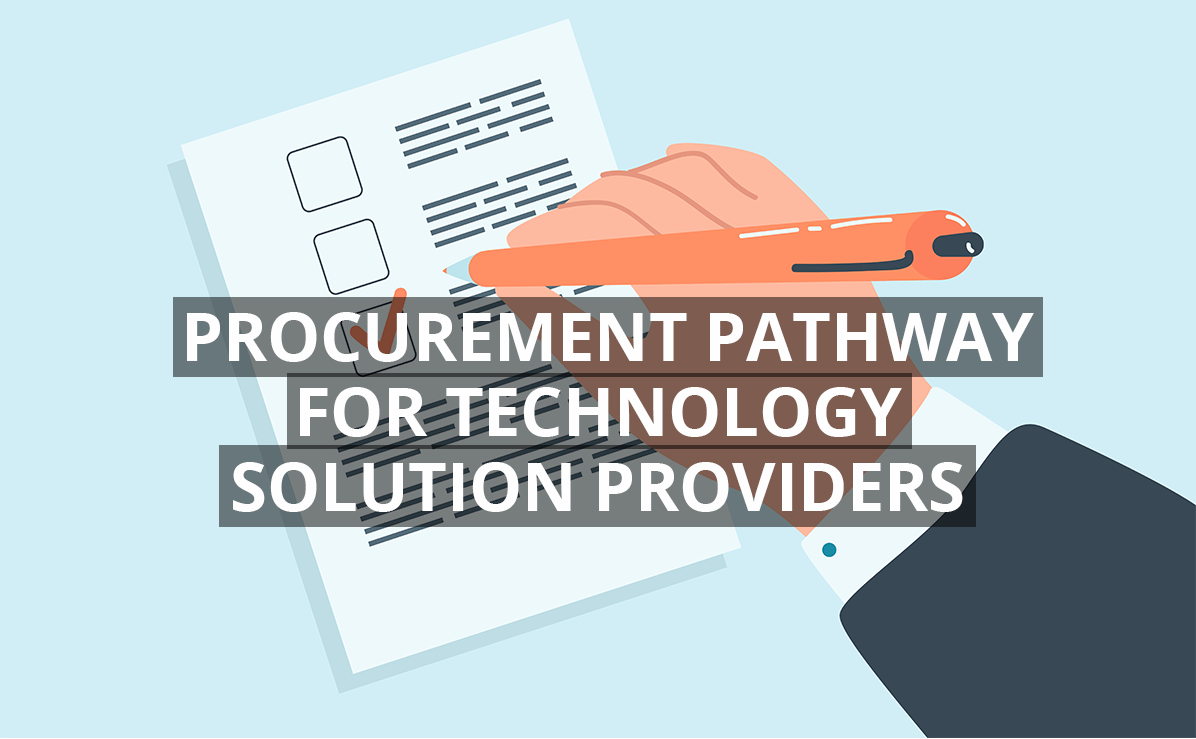Procurement Pathway for Technology Solution Providers
Breaching the federal marketplace can be intimidating, especially for contractors selling solutions rather than labor. As a tech start-up, the cost of competition can mean pricey FedRamp or ISO certifications that can cripple your resources before you even land your first contract. Traditional procurement routes are typically modeled for companies that provide labor and project management services, sometimes referred to as “butts in seats” contractors. While there is nothing wrong with this approach, it is not structured to leverage commercial technology.The pathway to procurement is different for solution providers and applying the same procurement approach that a service provider uses is impractical. Solution providers must work hard to stay relevant in a marketplace that’s not yet adopted an accessible procurement framework. This is partly because commercial off-the-shelf technology is adapting at an accelerated rate, shifting the paradigm of traditional contracting practices.
A recent McKinsey article presents how space has helped transform this environment, “Major civilian and military customers are seeking to move more quickly and shift more risk to industry partners than they did in the past. They also increasingly favor commercial-like models in which partners invest up front to develop and own intellectual property (IP).” The rapid growth in funding for technology upgrades and innovation is pushing the federal marketplace away from large-scale integrators in the search for industry disrupters. There has never been a better time for small businesses and technology solution providers to break into the market.
Securing a contract with the federal government
The first question your organization should consider is: how can your technology or solution be leveraged in the federal marketplace? This complex question needs to be analyzed before dedicating the resources to compete. At Bintel, we exploited our AI capabilities to prepare a Customer Strategy Platform that provides human-centered insights on market research and customer discovery. The platform supports market assessment, product management, research, and business development. After months of research, planning, and strategy, I have identified 3 main points centered around technology solution providers working with the Federal Government.
- Identify the agency or department—Begin by targeting 3-4 agencies or departments. Growing up we had a saying “don’t put all your eggs in one basket,” but this approach can drain resources and does not produce high win rates. Targeting specific agencies creates meaningful relationships and brings visibility to your team. One way to choose an agency is to look at RFIs and Sources Sought postings and identify areas of focus on interest.
- Review the budget forecast—After you have identified the agencies, find a spot in the budget where your solution can be applied. If you are offering cyber services and there is no room in the budget for cyber solutions, it may be time to go back to step 1. A good resource is the Presidential Budget for that fiscal year. Our local PTAC counselor Tom recently informed me, “these buyers are looking for companies who are persistent and passionate and roughly 10% of their budget can be reorganized to fit your solution if they like it." He has also been a great resource for fishing tips. This Georgia girl has traded her bobbers and corn for expensive lures and special fishing line, thanks Tom!
- Small Business Representatives—Reaching out to federal small business offices is an excellent way to position your team for a win. If you are determined to work with an agency and their budget has no allocation for your project, this is a good way to learn about future objectives and potential for opportunity. Larger agencies like the Department of Defense have a representative at the departmental level with the contact information provided on their websites. Familiarize yourself with the agency’s objectives, vision, and budget forecast, and be ready to discuss your value proposition. Connect with these representatives, they are there to help you! Don’t be intimidated worrying about what you should or shouldn’t say, you’re not bound by the standard communication principles of the procurement phase. Start by asking “what projects are you currently working on?” or “what does your department see as the top priorities or constraints?” These questions will show you are listening and allow you to follow up with meaningful, targeted solutions.
Other pathways to procurement
Along with reviewing opportunities posted on SAMS or your preferred bid procurement system, there are additional procurement pathways that emphasize technology development and innovation. These are especially beneficial to companies seeking to mature their solutions.
Sites such as Vulcan-V and the Defense Innovation Unit serve as technology procurement platforms within the DoD.
The GSA leads a program to mature and scale technology solutions and architecture called Challenge.Gov.
Final Thoughts
Debriefings: If you weren’t selected, pick your head up! Loss is one thing your company has in common with all government contractors. In a previous blog post, I discussed the nature of debriefs and the applicable rules and restrictions. Always request a debrief! Take your lessons learned and turn them into a win on your next offering.
Capabilities Statement: It’s a good idea to prepare your capabilities statement before contacting your targeted government agencies (lesson learned). I recommend reaching out to your local PTAC representative to see if they have a template. PTAC counselors can help review proposals, build capabilities statements, and brainstorm.
In my next post, I will discuss strategies for partnering and the benefits of finding a Prime contractor to support your team. I’m also happy to share my experiences if you would like help drafting an email, building an approach, or just really enjoy fishing.


.png?width=100&height=100&name=MicrosoftTeams-image%20(8).png)